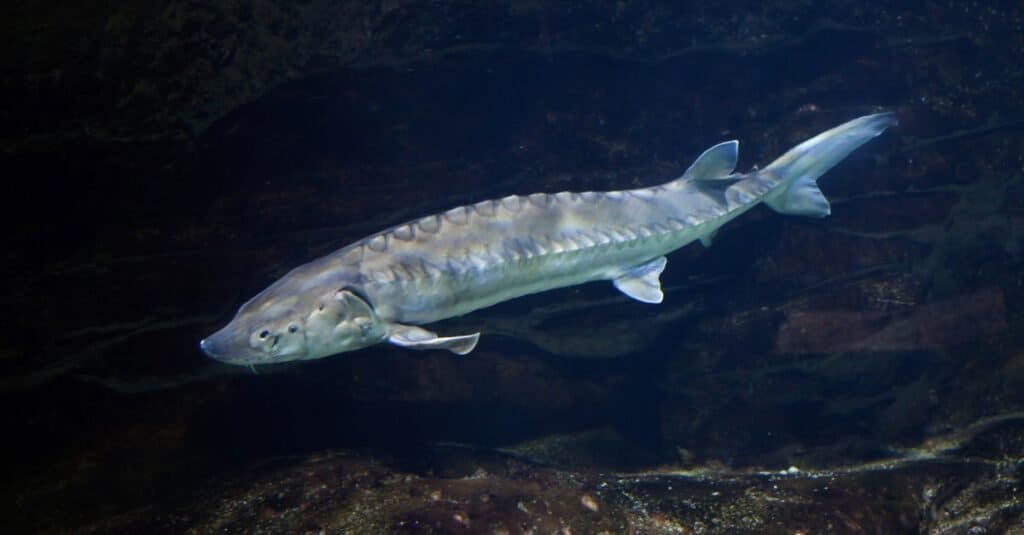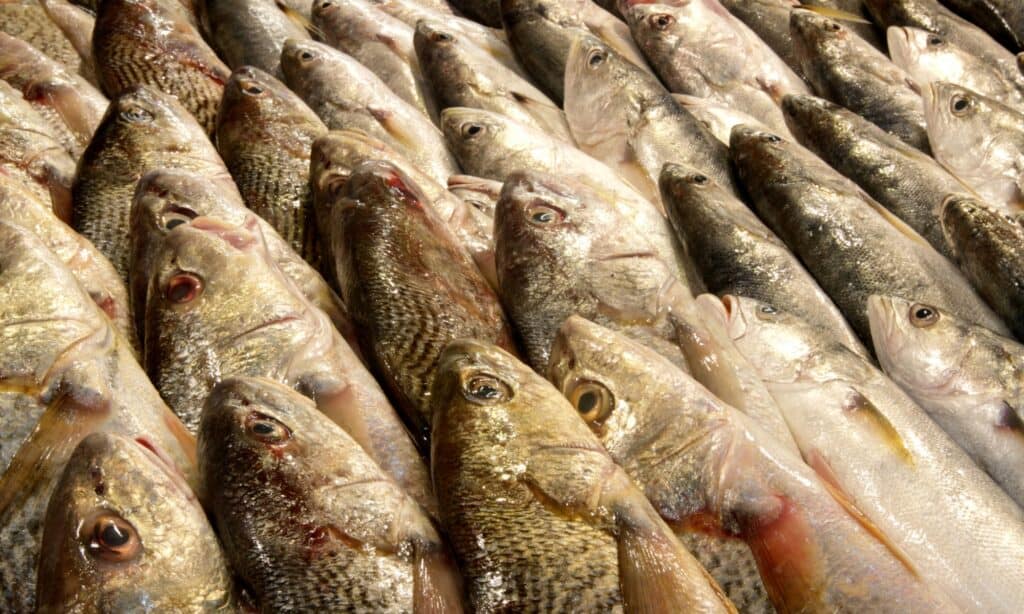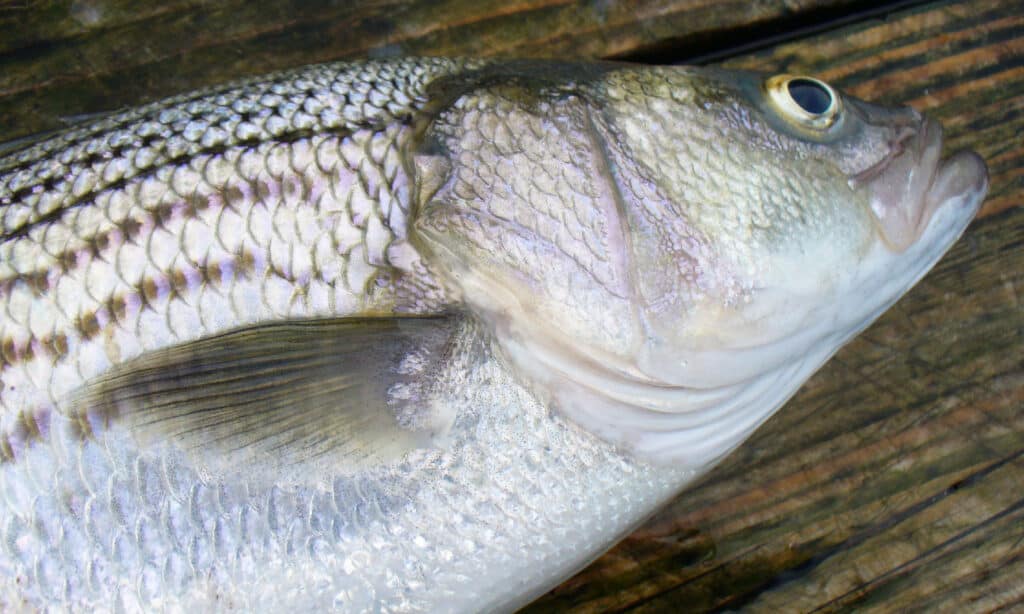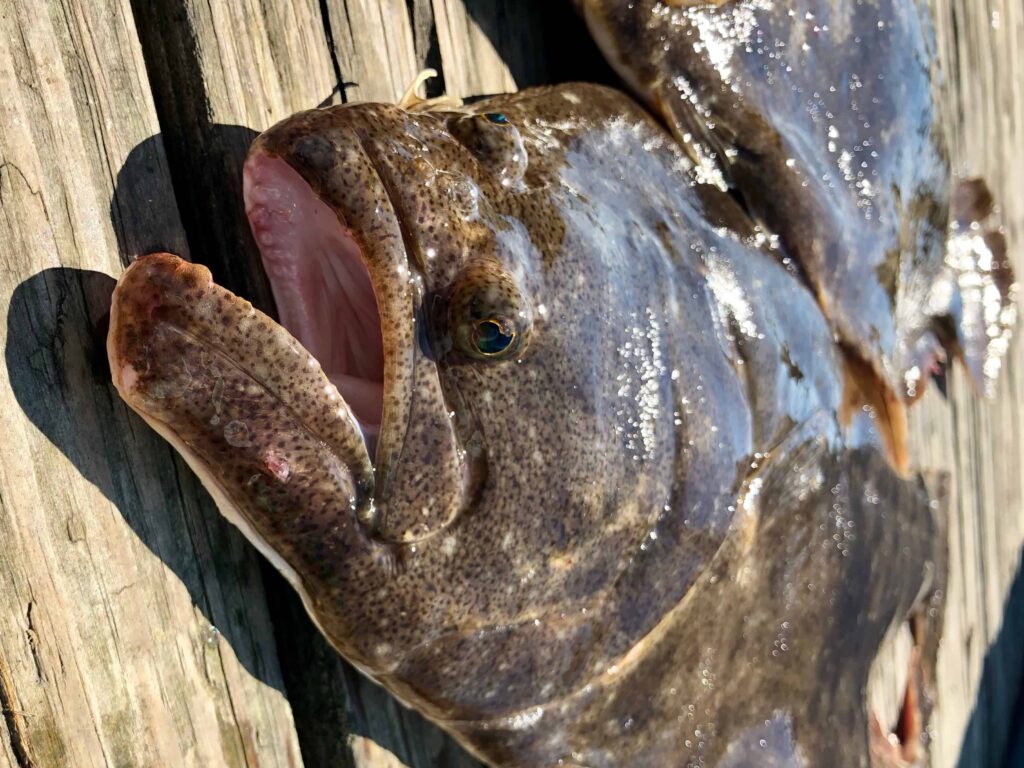With freshwater upriver and saltwater in New York City, the Hudson River estuary and its watershed provide habitat to more than 200 species of fish. Different types of walleye, gizzard shad, sturgeons, channel catfish, white catfish, and eels have been recorded during the annual counts.
Let’s have a look at the biggest fish ever caught in the Hudson River!

What is the Biggest Fish Ever Caught in the Hudson River?

A very old, 14-foot Atlantic sturgeon was found in the Hudson River in 2019.
©Vladimir Wrangel/Shutterstock.com
A very old, 14-foot Atlantic sturgeon was found in the Hudson River in 2019. Researchers had placed sonar equipment on the river near Hyde Park in Dutchess County and spotted a sturgeon lurking deep below the surface. The 14-foot sturgeon probably weighed about 800 pounds and was approximately 80 to 90 years old.
The University of Delaware geologist, John Madsen, who was running the sonar, said he could not believe it when the readings showed up on his equipment. According to Madsen, it’s very rare to see a sturgeon that large because they are usually about 3 feet to 10 feet long.
The state Department of Environmental Conservation was working tirelessly to bring back the endangered sturgeon population that was almost gone from the Hudson River; that was when the discovery was made.
How Big is an Atlantic Sturgeon?

Atlantic sturgeons typically grow up to 22 feet long on average and weigh approximately 200 to 800 pounds.
©iStock.com/RussieseO
Atlantic sturgeons have long, spindle-like bodies. They typically grow up to 22 feet long on average and weigh approximately 200 to 800 pounds. The largest recorded sturgeon was a female Beluga, captured in the Volga Delta in 1827. It measured 23 ft. 7 in. (7.2 m) long and weighed 3,463 pounds (1,561 kg).
Atlantic sturgeon’s colorations range from olive green and bluish-black on its back to white on its underparts. It has four barbels on each side of the mouth and a longer snout than other sturgeons. Instead of true scales, the Atlantic sturgeon has five rows of bony plates called acutes.
Where are the Atlantic Sturgeons Found?
Atlantic sturgeons inhabit all the rivers and coastal waters from Canada to Florida. Young ones are hatched in the freshwater of different rivers and head out to the sea as sub-adults. When they reach adulthood, Atlantic sturgeons return to their birthplace to spawn or lay eggs. A disjunct population is found in the Baltic region of Europe.
Their population has declined in many of their original habitats and is now considered threatened with extinction. Water pollution, poaching, overfishing, damming, and the destruction of natural watercourses and habitats are some of the major contributing factors to the decline of these incredible species.
How Long Have Atlantic Sturgeons Been Around?

Atlantic sturgeons are considered prehistoric fish since they have been around for more than 200 million years.
©iStock.com/Ekaterina Aleshinskaya
Atlantic sturgeons are living dinosaurs. They are considered prehistoric fish since they have been around for more than 200 million years. They existed during the Cretaceous period when dinosaurs roamed the earth. Its scientific name is Acipenser oxyrhynchus, which means “fish on the other sides of the mountains.”
What Do Atlantic Sturgeons Eat?
Atlantic sturgeons are bottom feeders. They feed primarily on invertebrates such as mollusks, worms, crustaceans, and numerous bottom-dwelling fish like sand lance. Larger species of Atlantic sturgeon are capable of swallowing an entire salmon.
In turn, Atlantic sturgeons are occasionally preyed on by lampreys and sharks. Lampreys parasitize them, causing harm or death.
Atlantic Sturgeon Reproduction and Lifespan
Female Atlantic sturgeons lay up to 800,000 to 3.75 million eggs a year, but not all are ultimately fertilized. Females travel back downstream after laying the eggs, while males are left to spawn the eggs. The gestation period lasts about 8 to 15 days.
Juveniles stay upstream for six years before moving into the sea. Females reach sexual maturity in 20 years, while males become sexually mature in at least ten years. Atlantic sturgeons live for an average of 50 to 60 years. Others may even exceed 100 years of age.
What Other Fish Live in the Hudson River?
Along with the Atlantic sturgeon, five other species of fish inhabit the Hudson River’s murky waters.
1. Weakfish

The weakfish is a saltwater fish found in the Hudson River, along Manhattan.
©iStock.com/luoman
The weakfish is a saltwater fish found in the Hudson River along Manhattan. They are slim, long fish with distinct dark spots and yellow fins. Adults range from 12 to 18 inches and weigh between 6 and 18 pounds. Their average life expectancy is 9-12 years, though some can live up to 17 years.
2. Striped Bass

Striped bass are found primarily near piers’ pilings and around the Hudson River’s rocks.
©iStock.com/Coast-to-Coast
Also known as the rockfish or linesider, the striped bass is an anadromous fish of the family Moronidae. They are found primarily near piers’ pilings and around the Hudson River’s rocks.
Striped bass can weigh 3 to 40 pounds and measure 20 to 35 inches in length. The biggest striped bass was caught in the Hudson River in 2014. It weighed 60 pounds and measured 53 inches long and 33 inches in girth, making it a remarkable new record catch. Striped bass have an average life expectancy of 30 years.
3. Bluefish

The bluefish can grow as big as 20 pounds.
©iStock.com/FtLaudGirl
The bluefish is a marine pelagic fish found in the Hudson River. It’s also the only extant species of the family Pomatomidae. They can grow as big as 20 pounds and are typically 0.5 to 2 feet long, with a maximum reported size of 4 ft and 31 lbs. Bluefish reproduce during spring and summer and can live up to nine years.
4. Summer Flounder

The summer
flounder
is also known as fluke fish.
©Shutterstock Media/Shutterstock.com
The summer flounder is a marine flatfish found in the Hudson River. It’s also known as fluke fish. They are usually found hunting in the water’s bottoms, but they have been seen gathering near structures such as piers. This fish rarely exceeds 20 pounds and is typically 15 to 20 inches long. Their average lifespan is between 15 and 17 years.
5. Porgy

Porgy is a common name for fishes in the family
Sparidae.
©iStock.com/Glen Richard
Porgy is a common name for fishes in the family Sparidae. They are also called scups or breams. Most of them have sharp spines and dull coloring. Others have faint stripes on their sides. They can be sighted swimming around artificial reefs and rocks in the Hudson River. They weigh up to 4 pounds.
Incredible Atlantic Sturgeon Facts
Atlantic sturgeons are the biggest fish native to the Chesapeake Bay. They were once found throughout the bay and its freshwater rivers, but they are now nowhere to be seen. Here are more incredible facts you should know about the Atlantic Sturgeon.
- From colonial times to the beginning of the 20th century, Atlantic sturgeon supported a significant fishing industry. Caviar made from sturgeon eggs was regarded as a delicacy in Europe. However, the fishery collapsed owing to low catch numbers.
- Atlantic sturgeons are very sensitive to pollution, low levels of oxygen, and many other poor water conditions. This, along with overfishing, dams, and the destruction of their habitats, has caused their numbers to drop significantly.
- The Atlantic sturgeon migrated to the Baltic Sea about 1300 years ago and replaced the native European sea sturgeon. In 1996, the last known specimen of the Atlantic sturgeon was caught in the Baltic region near Muhumaa in Estonia. It weighed 300 lbs (136 kg) and was 9.5 ft (2.9 m) long. This species was estimated to be approximately 50 years old.
- Atlantic sturgeons are considered primitive fish because they have undergone very few significant changes for millions of years.
- The Atlantic sturgeon was officially listed under the Endangered Species Act by the National Oceanic and Atmospheric Administration in 2012. In 2018, the National Marine Fisheries Service designated thirty-one rivers along the United States Atlantic shores as endangered habitats that require more attention to conserve this species.
- Although they are huge, Atlantic sturgeons don’t have teeth. They feed by extending their siphon-like mouths to suck food from the assemblage of organisms inhabiting the sea floor.
The photo featured at the top of this post is © iStock.com/Ekaterina Aleshinskaya
Thank you for reading! Have some feedback for us? Contact the AZ Animals editorial team.






